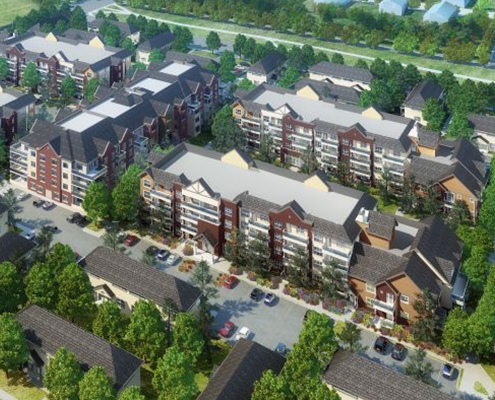Thermal Microgrids
Private Utility Energy
Do Thermal Microgrids Offer Any Advantages?

Any combination of technologies can be used in a thermal microgrid from hybrid to pure renewables.
Thermal microgrids can be integrated with electrical microgrids to achieve a much higher level of efficiency for all energy systems within a development or community.
GSS developed synchronized thermal and electrical microgrids because they can be more responsive, more efficient and allow bi-directional energy movement compared to the conventional distribution systems. Utilities are produced, managed, consumed, and monitored all on a local scale.
They can be integrated into larger central grids, but their defining characteristic is that they can operate independently if disconnected from the whole, increasing resiliency.
By drastically shortening the difference between where energy generated, how it is managed, and where it is being used, Smart micro-grids eliminate the need for transmission infrastructure, and thus reduce the amount of energy simply being lost along the way.
How is a Thermal Microgrid different from Conventional District Energy?
District Energy typically requires generated high temperature fluid or steam from a central plant and delivers this heat energy through insulated pipes. Similar to the current electrical grid, the thermal energy generally only flows in one direction.
Thermal Microgrids provides optimized lower temperature thermal services through non-insulated pipes to a group of interconnected thermal energy loads. It can supply offsetting energy loads without returning to a central location. It can even use treated grey water to reduce potable water consumption in a conventional or smart microgrid environment.
It uses a Dynamic Energy System that operates primarily with rejected or waste heat and cold thermal energy which is sourced, managed and consumed locally to meet all the project’s requirements.
What is a Dynamic Energy System?
Dynamic Energy Systems allow unlimited flexibility collecting, storing, and delivering waste thermal energy, both hot and cold.
What Benefits to Dynamic Energy Systems?
Dynamic Energy Systems can work with and improve the value of technologies such as heat pumps, Combined Heat and Power cogeneration, solar thermal, Thermal Energy Exchange and Storage systems with Active Zone Geothermal borefields as part of the thermal Microgrid.
Patented Technology
GSS holds three patents related to Thermal Microgrid Systems to meet the daily, seasonal, and annual heating and cooling thermal loads of communities. The primary benefit of the system is derived from its ability to recover and managing waste thermal energy to meet the demands of a building’s mechanical systems. This is based on peak hot and cold load demands including seasonal storage requirements. The Thermal Energy Exchange and Storage system is the controls required to manage the thermal demands using Active Zone Geothermal to provide load balancing using short term and seasonal storage of hot and cold energy.
